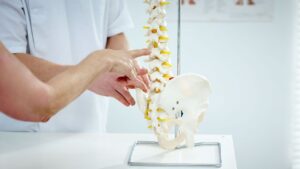
It should come as no surprise that weight loss is one of the biggest benefits of regular cycling, but it needs to be repeated. While diet is an important part of weight loss and fat loss, science shows that exercise is also helpful. Studies have shown that older diabetic women can break down visceral fat (harmful fat that increases the risk of holistic health problems such as heart attack, stroke and type 2 diabetes) when exercise and diet are incorporated into their routines.
A 2015 study published in the Journal of Hepatology found that aerobic exercise and cycling helped overweight and obese participants lose visceral fat. A 2017 study added that cycling was an effective way to lower blood pressure in people with type 2 diabetes. A systematic review in 2019 found that cycling for women is a useful exercise to reduce body fat and mass.
If a person wants to lose weight, a good diet and sufficient exercise are vital. Cycling helps women manage their weight because it increases metabolism, builds muscle and burns body fat. It also helps a person improve their core stability, which can help prevent injury.
Cycling is a physical activity that can be performed by people of all ages – from young children to older adults. It is one of the best ways to reduce the risk of health problems associated with a sedentary lifestyle. Cycling is also the easiest and most affordable type of physical activity to start with.
Research suggests that cycling offers numerous holistic health benefits, including the following. Regular cycling can help you lose weight, reduce stress and improve fitness, and it gives your heart, lungs, blood vessels and nerves a good workout. Ride your bikes to get the recommended 150 minutes of weekly exercise and the many other health benefits that you can get from the bike time in the saddle.
For example, a study in 2017 suggested that women who cycle to work experience remarkable holistic health benefits, including improved cardiovascular function. For example, a large study in 2017 that looked at the benefits of active commuting found that cycling was associated with a lower risk of cardiovascular disease, cancer and death in the workplace. In fact, the benefits were greater than the benefits of walking to work.
In fact, a small study in 2015 found that inpatient cycling improves balance in stroke patients. Cycling is also recommended for people with neurological disorders who have been trained in balance and coordination. A study of 2019 found that indoor cycling is recommended, combined with a healthy diet, to help people lose weight, lower blood pressure and improve their fat profile.
Exercise such as cycling for women has been shown to improve cognitive function, reduce depression and improve overall well being. A 2013 study found that exercise in a natural environment offers greater mental health benefits than indoor exercise. Although happiness is a factor in the overall mental health of exercise, we have discussed a variety of specific benefits and recommend cycling as part of your first aid package for mental health.
Self-esteem, depression, anxiety and stress are all naturally affected by exercise, and cycling has been shown to be one of the most effective activities for the head and heart. Regular riding can help to synchronize your circadian rhythm, which can help reduce stress hormones that make adequate regenerative and deep sleep difficult.
Cycling is also a social activity that can have a positive impact on women’s mental health and overall holistic health. Road riding offers the opportunity to enjoy a high-quality “me time” away from home duties and for women this can help reduce stress, anxiety, depression and the adrenaline and endorphins that cycling produces, which gives a natural peak – at least in the short term. Cycling for the UKs Road Report 2017 found that 91% of respondents to a survey on road cycling said it was important for their mental health. 15% of women (compared to 12% of men) said that the social aspect was their main motivation to ride a mountain bike, suggesting that more women value the possibility of social contact beyond technical or physically strenuous activities (14.4% of women compared to 26% of men cited technical difficulties as their main motivation ).
Bicycles are accessible to most people and you can cycle at your own pace. You don’t need an expensive bike, special clothes or a high level of fitness to enjoy cycling.
Cycling for women offers all the benefits of aerobic activity without the added health benefits. Cycling at a moderate pace can help you get the recommended physical activity that is necessary to reduce your risk of disease. For something more intense, you want it to be done at a lower intensity while you recover from an injury or illness, and then gradually build up to a more demanding physical workout.
As a time-saving mode of transport, cycling can replace sitting and driving a car or using a tram, train or bus as a holistic healthy exercise. Apart from being a fun way to experience an adventure, the excitement you get when you roll down a hill means you’re more likely to cycle farther than other physical activities that keep you inside or require special time and place.
Cycling also can help you protect yourself from serious illnesses such as stroke, heart attack, cancer, depression, diabetes, obesity and arthritis. A study conducted by Purdue University in the US showed that regular cycling can reduce risk of heart disease by 50%.
According to the British Heart Foundation, up to 10,000 fatal heart attacks a year can be avoided if people keep fit. Cycling 20 miles a week can reduce the risk of heart disease by less than taking up exercise, the charity says. Regular cycling can help you burn up to 1,000 calories per week, and cycling by women at a gentle pace of 12 miles per hour can help them burn 563 calories per hour, the study said.
According to experts at Bristol University, the benefits of cycling go beyond its core. Cycling has been shown to reduce various types of holistic health problems and in essence is a fun low-impact exercise. Cycling can fit into your everyday life, whether you drive a short distance to a neighborhood store, school or work.
In addition, aerobics accelerates breathing and heart rate, stimulating the contraction of the intestinal muscles. Researchers at the University of Illinois found that a 5 percent improvement in cardiovascular fitness through cycling led to a 15 percent improvement in mental health tests.







